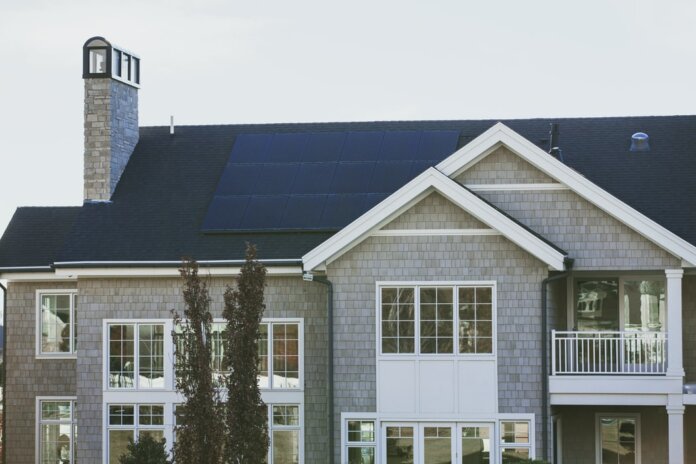As solar starts 2021, our commercial landscape looks a whole lot different: a two-year extension of the ITC, COVID immunizations, Majority Leader Chuck Schumer, President Biden.
And yet, the fundamental driver of 2020’s commercial success remains in place: Strong business execution. That’s why most people I talk with expect 2021 to be an even stronger commercial year. But perhaps because 2021’s solar scaling will take place on a more favorable landscape, now is the ideal time to look at a long-term drag on industry scaling: commoditization pressure.
My firm took several months last year to conduct a series of interviews with solar OEM executives about commoditization. We asked them two questions:
Is it commoditization and its pressure on prices a real or merely perceived problem?
Consensus: Real.
What should be done about it?
Consensus: None.
Some executives made the case that commoditization had been (past tense) a force for good, encouraging standardized products and lower prices. The resulting 89% drop in solar costs over the last 10 years has been one of the keys to solar becoming the cheapest form of energy, and the most popular among Americans (80% approval).
By some estimates, there are over 50 million U.S. homeowners considering going solar while we’re still in a pandemic-driven recession. All of this is a sign that our sector is maturing, and that’s a wonderful thing. We’ve come a long, long way from the phony Solyndra “scandal” of 2009 – a manufactured crisis designed to pull solar into the U.S. culture wars and block bipartisan support for pro-solar policies. Now is the time to study what other maturing sectors do to combat commoditization, which threatens to slow solar scaling just when the sector is consolidating and many of its bigger players are looking at integrating storage and software into their offerings.
Our interviewees identified some potential anti-commoditization strategies: specialization, product expansion, adding services, improving scalability and integration. What few of them raised was developing stronger brands: an anti-commoditization strategy that’s common in maturing sectors.
We looked for the observable signs of how 12 major solar OEMs were investing in brand differentiation. Specifically, how do major panel makers express their brands in the most compact formats: their taglines and the “about us” sections on their websites. It was the first time we could find that anyone had analyzed the state of solar brand development.
The tale of the tape is that all 12 OEMs are pitching their products on some subset of the same half-dozen claims:
- Experience
- Quality
- Innovation
- Leadership status/size of company
- Trustworthiness
- Sustainability
- Best financial option
One OEM addresses all seven sales points. Another seven address all but one of them, though which one they skipped varied.
These results are clear: OEMs are currently enabling commoditization by underinvesting in brands. (To see the full set of slides for our analysis, click here).
Contrast this state of branding with guidance from marketing guru Seth Godin. His book, “This is Marketing,” distinguishes brands from commodities with a simple question: Is it subject to “sort by price,” like airline seats? Or are the brands differentiated enough that some command a premium because they offer a convincing promise of a better product experience?
So, with all the complaining about commoditization, does anyone in solar really have a brand – at least as Seth Godin would define it? Not really.
Now, for the good news: The market is evolving to reward companies that significantly step up their branding game. Last year, one OEM conducted a mid-pandemic look at homeowners’ views of going solar. It found the gating development is the shift in homeowner thinking about going solar. Those for whom solar is a one-time purchase are somewhat less likely to go solar now, while those seeing it as an investment are now more common. In fact, they comprise 70% of the current market. Among these customers, up-front cost trailed as a consideration, in fourth place.
The research found that the most recognizable solar brands were Tesla, Panasonic and LG. It’s not an accident that these three companies have invested hundreds of millions of dollars in their respective brands to sell consumer products.
For the last several years, SunPower was widely seen as solar’s leader in brand development and marketing communications. It’s getting out of panel making, leaving the top slot open for another OEM. But to do that, that rival will have to find a way to articulate technical differences through an emotional connection with homeowner end-users.
Companies that stay in the “sort by price” zone are going to see far leaner profits than necessary. But that will be a choice, not an inevitability. The other option is to take steps to define quality and distinguish the brands that offer it. The companies that take that approach will likely have the strongest balance sheets in 2021 and beyond.
Mike Casey is president of Tigercomm, an organization that provides marketing, communications and related services to companies in the clean-energy industries.
Photo courtesy of Vivint Solar





Branding is the last advantage against the commoditization of products or services in any industry — It’s why people still pay a premium for Apple products, or wear the same shoe brand they wore as a kid (Nike?). Great article and highlights the importance of brand not just for consumer goods.